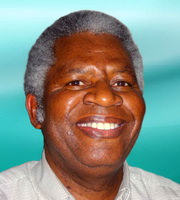
by Dr. Jesse Viner
Traumatic events alter the way we function. Physically, socially, emotionally, and mentally, we operate differently after trauma spikes. Our bodies hold onto stress, with symptoms like fatigue, high blood pressure, or insomnia as augmented levels of stress hormones, including cortisol and norepinephrine, pulsate through our nervous systems. We may withdraw from friends and family or displace feelings of anger, guilt, or shame onto those which we hold closest as we struggle in conversation and connection. Our minds, entangled in distress, hardly focus on daily responsibilities like work, school, or family. Worry, sadness, or fear consumes our thought patterns. When trauma hits, we consciously need to focus on restoring balance physically, socially, emotionally and mentally. With reliance on yoga and art as tools for healing, physical, social, emotional, and mental recovery from trauma is possible.
Physical recovery
An abundance of information, detailing yoga’s positive effects for physical health, highlights improvements in flexibility, strength, and endurance. In addition, to the obvious, outward facing benefits, like a toned body, yoga acts as a catalyst, internally. Movements that involve twists, like Half Lord of the Fishes Pose or Revolved Side Angle Pose, massage internal organs, allowing for increased blood flow, hormone production, and waste detoxification. By incorporating daily yoga to combat physical affects of trauma, systems like the nervous system and the endocrine system, resume healthy functioning and restore balance to physical wellness.
Art improves physical health by allowing for stimulated brain activity. The brain creates internal paths and forms connections by means of synapses. Art can be different every time it is attempted, which in turn stimulates synapses to be formed, creating new paths within the central nervous system. After trauma has occurred, stress can deplete the activity of synapses. By adding art to recover from trauma, brain stimulation can be restored and the central nervous system will have an easier time coping with stress.
Social and emotional recovery
Our fullest potential to function emotionally and in social situations, stems from a healthy self esteem. Self esteem suffers greatly as a result of trauma when bullying or victimization occurs. When self esteem lowers, so does our ability to set boundaries with others, accept differences, and handle social conflicts.
Practicing yoga or art rebuilds self esteem. Both yoga and art offer creative outlets to explore different mediums, letting us unveil personal strengths and interests or revitalize forgotten talents.
Yoga practices vary greatly. From the hot intensity of competitive Bikram yoga to the relaxed, gentle movements of restorative practice, people can find a pace that meets their comfort level. Experimenting with different classes is an excellent way to find a connection in the yoga community, learn new poses, and master mindful meditation. Self esteem may improve as one grows in their personal practice, mastering difficult poses like Dancer Pose or Warrior III.
Mediums of art differ greatly as well, with options for self discovery. Painting, drawing, sculpting, taking photographs, and playing music helps healing from trauma. Art allows expression of feelings, without the pressure of putting words to our perception. Art supplies us with the safety of working through the impact of trauma by broadcasting our feelings through creative measures. Completing complex tasks, like painting a picture or capturing a stunning visual on film, we feel a sense of accomplishment, thus raising our self esteem.
By unlocking personal strengths and interests in yoga or art, our sense of self is nurtured. With a healthy amount of self esteem, we set boundaries, accept differences, and handle social conflict with ease.
Mental recovery
The hardest part of recovering from trauma may be getting your mind back on a healthy track. Pining over the details forces us to relieve the hurt while restricting us from moving forward. Practicing yoga or art regularly essentially nourishes our minds with healthy concentrations. We take control of our thoughts as we turn to our mats or canvasses, giving our minds the mental break we truly deserve. Choices exist after trauma. Opt for supportive measures like yoga or art to promote the healing process.
 Author Bio: Dr. Jesse Viner, founder of the Yellowbrick program, is a recognized expert in the treatment of eating disorders, difficulties resulting from trauma and abuse, and bipolar disorder, Dr. Viner has three decades of experience applying the knowledge of psychiatry and psychoanalysis to the challenge of creating meaningful and pragmatically effective treatment programs. Dr. Viner has served as Director of Adult Psychiatry Inpatient Services for Northwestern University Medical School; Medical Director of Four Winds Chicago and Director of University Behavioral Health. He is on the faculty of the Chicago Institute for Psychoanalysis and The Family Institute at Northwestern University. Dr. Viner is a Distinguished Fellow of the American Psychiatric Association.
Author Bio: Dr. Jesse Viner, founder of the Yellowbrick program, is a recognized expert in the treatment of eating disorders, difficulties resulting from trauma and abuse, and bipolar disorder, Dr. Viner has three decades of experience applying the knowledge of psychiatry and psychoanalysis to the challenge of creating meaningful and pragmatically effective treatment programs. Dr. Viner has served as Director of Adult Psychiatry Inpatient Services for Northwestern University Medical School; Medical Director of Four Winds Chicago and Director of University Behavioral Health. He is on the faculty of the Chicago Institute for Psychoanalysis and The Family Institute at Northwestern University. Dr. Viner is a Distinguished Fellow of the American Psychiatric Association.
Image source: http://www.flickr.com/photos/fiberartgirl/7174488544/



















